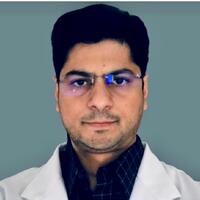What is vertigo?
Vertigo is a sensation of spinning, losing balance or becoming disoriented. Vertigo happens when motor sensations are affected. It can be associated with a serious underlying disease or disorder that affects the sensory function of balance, proprioception or vision. People with vertigo experience dizziness and false spinning sensations.
What are its main signs and symptoms?
The main signs and symptoms associated with vertigo are:
- Tinnitus (ringing in the ears)
- Hearing loss
- Nausea while spinning
- Changes in breathing pattern and heartbeat
- Sweating
- Inability to walk
- Change in alertness
- Abnormal eye movements
- Double vision
- Facial paralysis
- Difficulty in speaking
- Weakness in the arm or leg
What are the main causes?
The cause of vertigo could be any of the following conditions:
- Diabetes mellitus
- Atherosclerosis
- Migraines
- Neurologic disorders
- Certain medications like antihistamines at high doses
- Head injury
- Stroke
- Labyrinthitis (swelling of the inner ear)
- Hole in the inner ear
- Non-cancerous tumours
- Seizures
- Meniere’s disease
- Diseases of the blood vessels
How is it diagnosed and treated?
The doctor may order a computed tomography (CT) scan and magnetic resonance imaging (MRI) of the head, electronystagmography (measurement of eye movements), blood tests and an electroencephalogram (EEG) to measure the electrical activity of the brain. The doctor may also go through the medical history to find out if diabetes, heart disease, or any other disorder is causing vertigo.
Treatment is provided for vertigo after its cause is determined. The common treatments prescribed for vertigo are:
- Anti-anxiety drugs
- Muscle relaxants
- Exercises to stabilise the gait (manner of walking)
- Habituation exercises
- Training for sensory organisation
- Static and dynamic balance exercises to help balance better
- Canalith repositioning treatment (CRT) – This treatment is provided for the most common type of vertigo (benign paroxysmal positional vertigo)
- Aerobic conditioning – A process where continuous rhythmic movements help the lung and heart muscles to pump blood efficiently, making sure that more oxygen is supplied to the muscles and organs.

 Doctors for Vertigo
Doctors for Vertigo  OTC Medicines for Vertigo
OTC Medicines for Vertigo
 Vertigo articles
Vertigo articles

 Home Remedies for Vertigo
Home Remedies for Vertigo







 Editorial Team
Editorial Team











